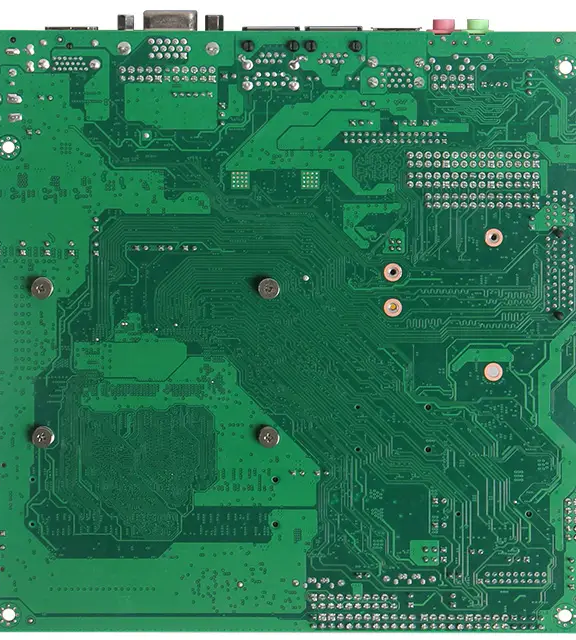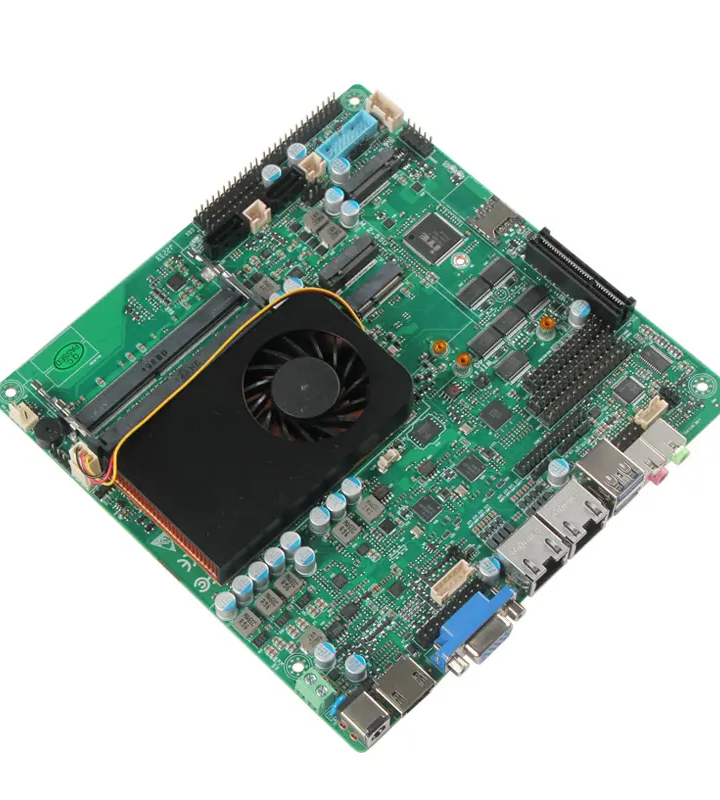
U svijetu tehnologije koji se brzo razvija, PIESIA stoji visoko kao vodeći inovator u području industrijskog računalstva. Naša predanost istraživanju i razvoju rezultirala je nizom proizvoda koji nisu samo vrhunski, već i pouzdani i izdržljivi, što ih čini savršenima za široku lepezu primjena. Među našim najpopularnijim proizvodima je Mini ITX matična ploča, kompaktno, ali moćno računalno rješenje koje je revolucioniralo industriju.
PIESIA Mini ITX matična ploča dizajnirana je da ponudi maksimalne performanse na minimalnom prostoru. Njegov faktor malog oblika omogućuje mu da stane čak iu najuže prostore, što ga čini idealnim za upotrebu u industrijskoj automatizaciji, ugrađenim sustavima i drugim kompaktnim računalnim aplikacijama. Usprkos svojoj veličini, ova matična ploča je snažna, s podrškom za najnovije procesore i memoriju velike brzine, osiguravajući gladak i učinkovit rad čak i pod velikim radnim opterećenjem.

PIESIA, poznata kao dobro poznato nacionalno visokotehnološko poduzeće, fokusirana je na istraživanje i razvoj, proizvodnju, prodaju i usluge nakon prodaje integriranih strojeva, računala i srodnih proizvoda za industrijsku kontrolu matičnih ploča. Što se tiče Mini ITX matičnih ploča, PIESIA je jedan od pouzdanih brendova koji se ističe u proizvodnji ove kategorije. Naše Mini ITX matične ploče dizajnirane su precizno kako bi zadovoljile različite zahtjeve industrijske automatizacije, interneta stvari i ugrađenih sustava. S velikim iskustvom na terenu i korištenjem napredne tehnologije, PIESIA vam može jamčiti da će vaši projekti biti neprimjetno integrirani, čime se osigurava da će vaš učinak biti maksimalno povećan.
Uz to, naša je tvrtka među glavnim igračima u industriji koji nudi brojne Mini ITX matične ploče visoke kvalitete koje dolaze u kompaktnom obliku. Ili trebate rješenje koje je obdareno izvrsnim performansama za prilično komplicirane aplikacije ili čak nešto jeftinije za projekte čiji je proračun ograničen; naši mini ITX dizajni matičnih ploča imaju sve za njih tako da mogu zadovoljiti sve svoje različite specifikacije. To je vidljivo u kvaliteti i inovativnosti naših proizvoda, što nas čini izborom broj jedan za svaku tvrtku koja želi kupiti visokoučinkovite Mini ITX matične ploče od pouzdanih izvora kao što je naš. Piesia Mini-ITX rješenja za matične ploče: – Naša priča

PIESIA, poznata nacionalna visokotehnološka tvrtka, bavi se istraživanjem i razvojem industrijskih kontrolnih matičnih ploča, računalnih sustava, kompletnih strojeva i računalnih sustava te nudi usluge prodaje. Pouzdan brend kada su u pitanju Mini ITX matične ploče je PIESIA koja pruža avangardna rješenja za različite primjene. S našim inovativnim pristupom i predanošću kvaliteti; našim klijentima su stoga zajamčene vrhunske performanse i pouzdanost njihovih računalnih sustava.
Kao lideri na tržištu; PIESIA Mini ITX matične ploče dizajnirane su da zadovolje širok raspon poslovnih potreba. Bilo da se koriste za industrijsku automatizaciju ili digitalno označavanje ili aplikacije za kompaktno računalstvo, naši proizvodi glavne ploče poslužit će vam s potrebnom snagom i fleksibilnošću. Na primjer s višestrukim utorima za proširenje, robusnim napajanjem kao i podrškom za najnovije procesore. Poduzeća koja trebaju matične ploče male veličine, ali s učinkovitim performansama, trebale bi razmisliti o PIESIA-inim mini ITX baziranim pločama.

U svijetu industrijskog računalstva, minijaturizacija ide ruku pod ruku s performansama. Tu stupa PIESIA, koja dizajnira, proizvodi i prodaje mini ITX matične ploče i srodna industrijska računalna rješenja. Naša predanost pionirstvu i kvaliteti doveli su nas do vodećeg igrača na svjetskom tržištu industrijskih kontrolnih sustava.
Naše mini ITX matične ploče odraz su inženjerske izvrsnosti spajajući kompaktnost s robusnošću. Ove su ploče dizajnirane da izdrže teške industrijske uvjete, a ipak su dovoljno male da se ugrade u skučene prostore, što ih čini primjenjivima u raznim scenarijima. Počevši od automatizacije, robotike, podatkovnih centara do poslužiteljskih soba, naše matične ploče podnose čak i najzahtjevnije zadatke obrade uključene u ovu vrstu računalnog rada.

PIESIA, vodeća nacionalna tvrtka visoke tehnologije, fokusirana je na istraživanje, razvoj, proizvodnju i marketing industrijskih kontrolnih matičnih ploča, računala i srodnih proizvoda. Također smo specijalizirani za ponudu mini ITX matičnih ploča po mjeri za razne industrije poput automatizacije, robotike i interneta stvari. Naš fokus je ponuditi kreativne, pouzdane i isplative mini ITX matične ploče s poboljšanim performansama za dugoročnu upotrebu mnogim tvrtkama diljem svijeta.
Jedna od naših ključnih ponuda proizvoda uključuje prilagođenu mini ITX matičnu ploču koja je dizajnirana s malom površinom što joj omogućuje jednostavnu ugradnju u skučene prostore u većini industrijskih postavki. Ove sićušne ploče dolaze prepune najnovijih tehnologija kao što su Intel i AMD procesori koji podržavaju dvojezgrene ili četverojezgrene CPU-e kao i višestruke grafičke kartice između ostalog. To im omogućuje da se nose sa složenim računalnim zadacima uz održavanje niske potrošnje energije što ih čini idealnim za industrijske primjene gdje je prostor često na vrhuncu.

Shenzhen ZunSia Intelligent Technology Co., Ltd. Osnovana 2009., tvrtka je nacionalno visokotehnološko poduzeće usmjereno na istraživanje, razvoj, proizvodnju, prodaju i postprodajne usluge industrijskih matičnih ploča, kompletnih strojeva, računala i srodnih proizvoda, s 14+ godina iskustva u industriji.
Kupcima pružamo Sveobuhvatne prilagođene usluge , Naši proizvodi nalaze široku primjenu u industrijskoj automatizaciji, komunikacijskoj opremi, energetskim sustavima, mrežnoj sigurnosti, inteligentnom transportu, videonadzoru, zdravstvu, obrani, zrakoplovstvu, samoposlužnim terminalima, uređajima za pohranu, digitalnim natpisima, ugrađenim računalima, potrošačkoj elektronici itd. .
Više od 10 godina iskustva u industriji, izvoz u 23 zemlje.
Usluga na jednom mjestu za proizvode kako bismo vam pružili proizvode više kvalitete.
Da bismo vam pružili odgovarajuća rješenja za proizvode.
Vodeća temeljna tehnologija u industriji, posvećenost detaljima, stroga kontrola kvalitete.
Mini ITX matična ploča je kompaktna matična ploča koja je manja od tradicionalnih ATX ili Micro ATX matičnih ploča. Dizajniran je da stane u kućišta malog formata, a istovremeno pruža bitne značajke i performanse za različite računalne potrebe.
Prednosti korištenja Mini ITX matične ploče uključuju njezinu kompaktnu veličinu, koja omogućuje izgradnju malih i prostorno učinkovitih sustava. Pogodan je za aplikacije u kojima je prostor ograničen, kao što su računala za kućno kino, sustavi za igranje malih dimenzija ili prijenosni sustavi.
Mini ITX matične ploče mogu biti prikladne za igranje, posebno u igraćim sustavima malog formata. Međutim, važno je uzeti u obzir faktore kao što su podržani procesori, kompatibilnost grafičke kartice i mogućnosti hlađenja kako bi se osigurale optimalne performanse igranja.
Da, mnoge Mini ITX matične ploče podržavaju više zaslona. Međutim, određeni broj i vrste priključaka zaslona mogu varirati ovisno o modelu matične ploče. Preporuča se provjeriti specifikacije matične ploče kako biste bili sigurni da zadovoljava vaše zahtjeve za više zaslona.
